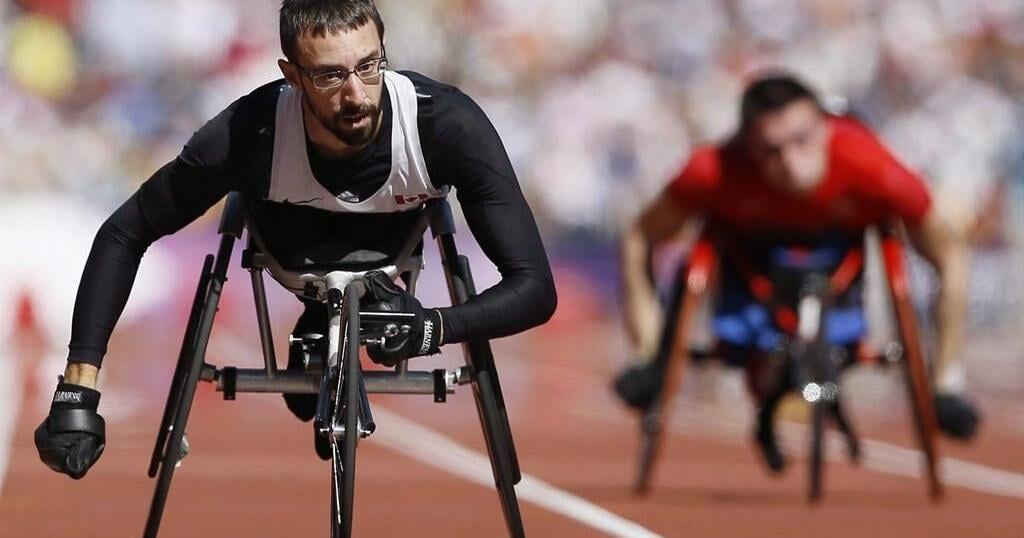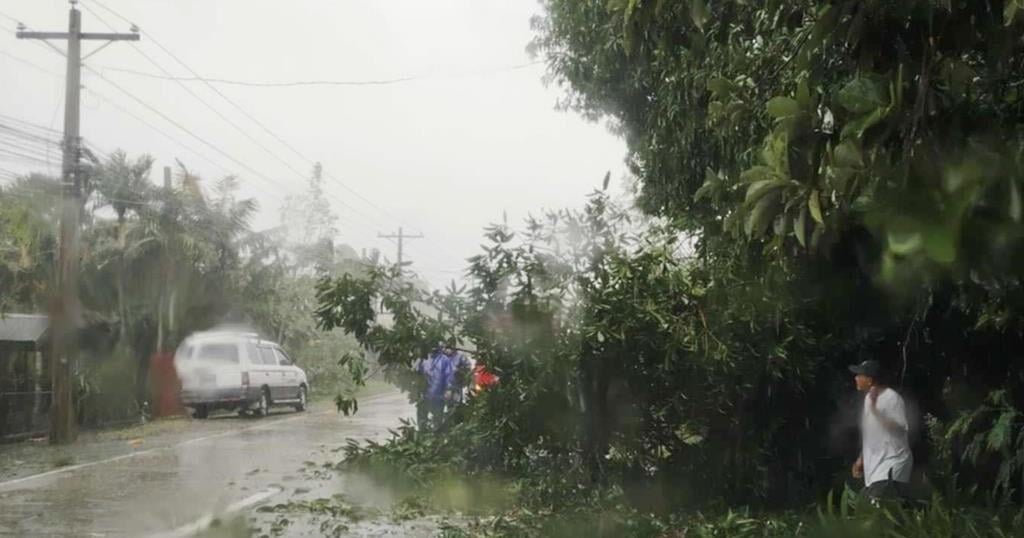PARIS – Paralympic Games medals have become harder for Canadians to win, which makes them precious in Paris.
Canada’s 126-member team is among 4,400 athletes from 168 countries competing in 22 sports that get underway Thursday.
There were just 122 participating countries in Sydney, Australia in 2000, so the demands for an athlete to win a medal at the Paralympic Games jumped exponentially in nearly a quarter century.
“Every year, every quad, they just keep getting bigger and bigger, with more media exposure, more athletes, more events,” Toronto wheelchair rugby player Travis Murao said.
Canadians won 21 medals, including five gold, in Tokyo’s Paralympics delayed from 2020 to 2021 and held without spectators because of the COVID-19 pandemic.
Canada’s medal total dropped from 29 in Rio in 2016 and 31 in London in 2012.
“We as a nation, since London where we won 31 medals at the Paralympic Games, have had a performance trend that has not been positive,” said Own The Podium chief executive officer Anne Merklinger.
“Post-Tokyo there was very much a concerted, collaborative effort with the Canadian Paralympic Committee and the national sport organizations that are invested in Paralympic sport to say we need to dig into this more and identify what are the opportunities that Canada has to get back to near where we were in London . . . be ultimately a top-eight, top-10 summer Paralympic nation?”
Paralympic sport now requires the full-time professional coaching and support staffs that Olympians demand. The cost of a sport wheelchair can also range from $5,000 to $25,000.
“We’ve gotten by with what we’ve done and I would say we’ve been punching well above our weight,” Canadian Paralympic Committee CEO Karen O’Neill said.
“In this case, the investment in the Paralympic system is really probably the most critical element for us to continue to compete on a world stage and to close that gap.”
Swimming and track and field is expected to lead Canada’s medal charge in Paris, with contributions from cycling, triathlon and boccia over 11 days to the closing ceremonies Sept. 8.
Swimmer Aurelie Rivard of St-Jean-sur-Richelieu, Que., wheelchair racer Brent Lakatos of Dorval, Que., Calgary triathlete Stefan Daniel and track cyclist Kate O’Brien and judoka Priscilla Gagne of Granby, Que., are among Canadians to watch, as is para rower Jacob Wassermann, who is a survivor of the Humboldt Broncos bus crash.
“In Rio, we had a sold out venue and so loud, everyone was screaming, I couldn’t hear the coach whatsoever,” Gagne recalled. “In Tokyo, it was the opposite because the stands are empty, so I could hear people sneeze.
“To now go back to being able to have a full sold-out venue and with my whole family there and a lot of friends that will be able to come because it’s so close, it’s going to be just wonderful. It’s going to be a great book end and a great exit to my career.”
Canada hasn’t won a medal in a team sport since London in 2012. Women’s goalball and sitting volleyball are trending to end that drought.
“We always want the team medals,” said CPC chief sport officer Catherine Gosselin-Després. “But in team sport, it’s always the draw and who they’re facing.”
Josh Vander Vies, a boccia bronze medallist in 2012, and eight-time Paralympic skiing medallist Karolina Wisniewska are Canada’s co-chefs.
“High-performance is so fickle,” Vander Vies said. “You can have everything go right in your preparation, you can have everything go right on the game day and still not make it onto that podium.
“We’re all chasing the podium, we all want to win, we all want incredible results. The message on our team is that we are celebrating excellence, we’re celebrating wins.”
Paris marks the first time Canada’s Paralympians will receive bonus money for medals on the same scale as their Olympic counterparts— $20,000 for gold, $15,000 for silver and $10,000 for bronze.
“Funding Paralympic medals at the same level as Olympic medals for the first time is a huge step,” said volleyball player Heidi Peters of Neerlandia, Alta.
The CPC will pay athletes out of an $8-million endowment fund. Health tech entrepreneur Sanjay Malaviya of Hespeler, Ont., contributed $4 million and the federal government $2 million to it.
Malaviya also renewed grants of $5,000 per medallist to top up the medal bonuses.
CBC/Radio-Canada will broadcast 140 hours of live coverage with an additional 2,000 hours of streaming over digital platforms. CBC will broadcast three live shows daily.
The International Paralympic Committee (IPC) will allow 88 Russian and eight Belarusian athletes to compete under a neutral flag, which is more than the combined 32 at the Olympic Games.
The IPC vetted athletes holding those passports to ensure they don’t support the war in Ukraine or have ties to military service.
The Paralympic Games wrap messages of inclusion and diversity into performance, and Wisniewska believes Paris can take all those elements to another level.
“It’s going to be like nothing you’ve likely experienced before unless you competed in London perhaps in 2012,” Wisniewska said.
“There is a necessity for Canadian athletes to be prepared for that level of world stage and absolute excellence and brilliance that Paris is bringing to the table.”
— with files from Gregory Strong
This report by The Canadian Press was first published Aug. 28, 2024.






















